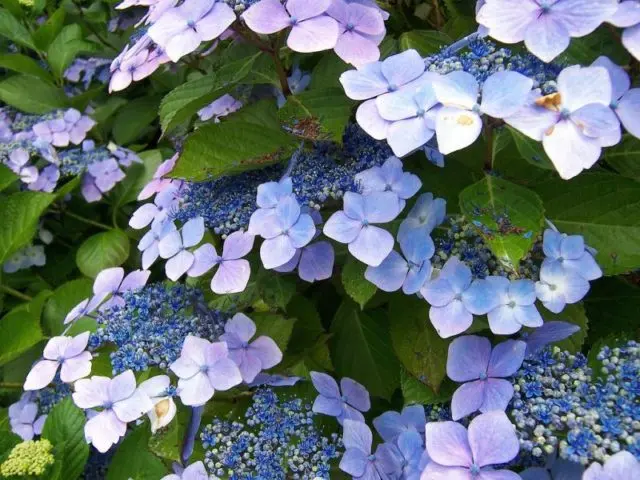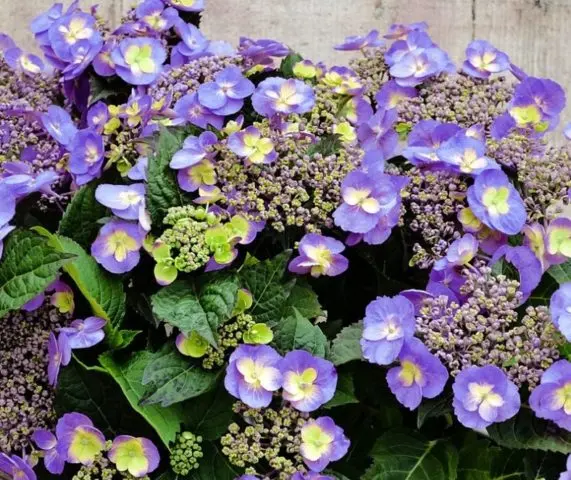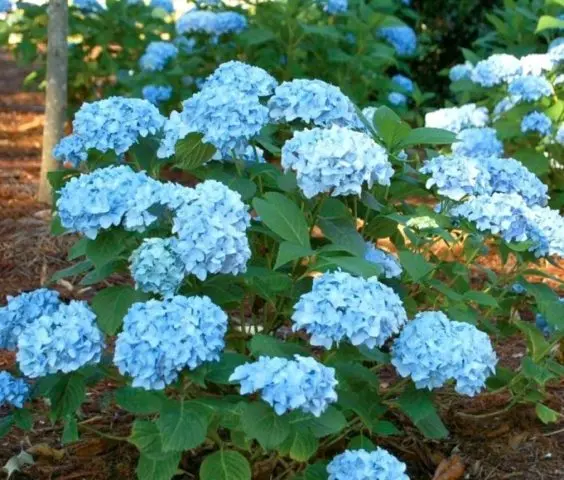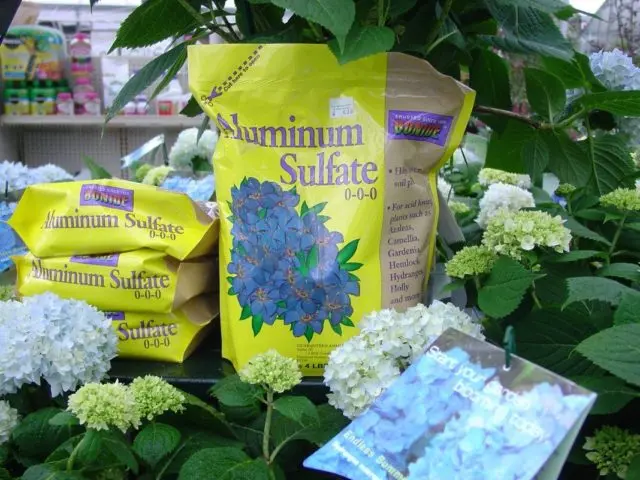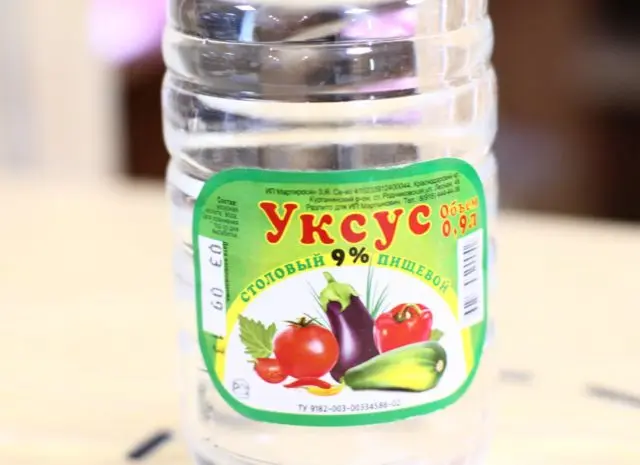Contents
Hydrangeas are plants that can change the color of flowers under the influence of various external factors. This property is widely used in decorative floriculture, and no serious costs are needed to change its shade. In order for the hydrangea to be blue or pink, only the presence of certain substances in the soil is necessary.
Is there a blue hydrangea
Breeders have bred many varieties of hydrangeas, among which there are those that, under certain conditions, acquire a blue or blue color. Here is some of them:
- Aisha. It belongs to large-leaved, more often grown as a tub plant due to low frost resistance. Flowering begins in July. Inflorescences are large, up to 15 cm, collected from flowers about 3 cm in size.
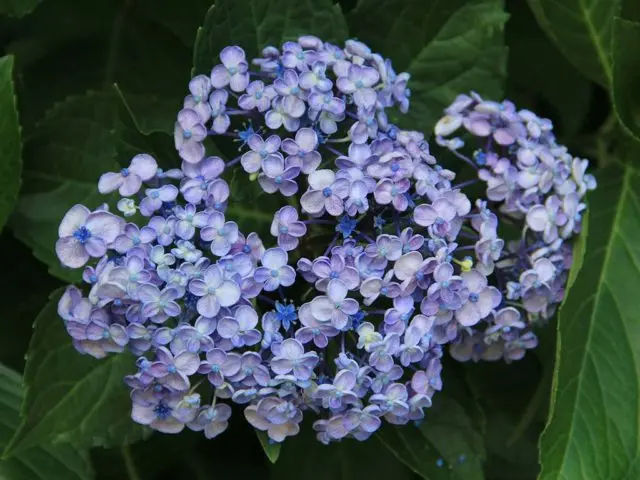
Depending on the acidity of the soil, it can change color from pink to bright blue.
- Blue Wave. This variety of large-leaved hydrangea was bred in Holland. Blooms in July-August.

The color varies from blue to pink, depending both on the PH level of the soil and on the content of aluminum salts in it.
- Blueberry Cheesecake. Remontant variety, blooms from May to September. The height of the bush can reach up to 1,2 m.

The inflorescences are semi-double, large, depending on the acidity of the soil, they are painted in colors from blue to purple.
- Verena Blue. Differs in very large inflorescences of sky-blue color, the size of which can reach up to 20 cm.

Verena Blue blue inflorescences are very often used for wedding bouquets.
- Mini Penny. A variety of large-leaved hydrangea, grows up to 0,9 m. Inflorescences are spherical, the color can vary from blue to pink.

The frost resistance of this variety is low, and when grown in the middle lane, the bushes must be covered for the winter.
What determines the color of hydrangea
The color of hydrangea flowers, its saturation and shade largely depend on the acidity of the soil on which the plant is grown. At a pH below 5,5, which corresponds to a weakly acidic reaction, aluminum salts dissolve in the earth. In the form of ions, this element, along with other nutrients, enters the inside of the flower, where it reacts with other organic compounds, causing the corolla to turn blue. Thus, the color of the petals is a kind of indicator of soil acidity.
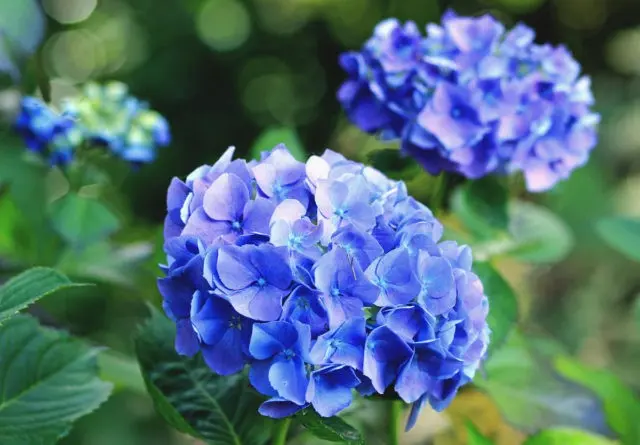
When grown in acidic soils rich in aluminum, it turns blue.
Important is not only the presence of aluminum salts in the earth, but also its concentration. If it is small, then the blue color will be weak, barely noticeable. Another factor that directly affects the ability of hydrangeas to absorb aluminum from the soil is the content of elements such as phosphorus and potassium in the soil. The first binds aluminum, collecting it into complex, poorly soluble compounds, so its concentration should be minimal. Potassium has opposite properties, so it is desirable that there is a sufficient amount of it in the soil.
How to make hydrangea blue
Getting the blue color of the petals from hydrangea flowers is quite simple. To do this, you just need to ensure the appropriate acidity of the soil and the presence of a sufficient amount of aluminum compounds in it.
How to water hydrangea for blue color
In order for the plant to absorb aluminum from the soil faster and more fully, it is better to apply all the substances necessary for this in dissolved form, along with watering. To do this, you can use the following drugs:
- Aluminum-potassium alum. This compound is highly soluble in water and contains substances in an easily accessible form. The consumption rate is 5 g per 1 liter of water.
- Complex mineral fertilizers with high potassium content and a minimum percentage of phosphorus.
- Potassium sulphate. This fertilizer not only enriches the soil, but also acidifies it. It takes 15 g of the substance per 1 liter of water.
- Organic acids. To acidify the soil, solutions of oxalic, citric, acetic and other acids can be used.
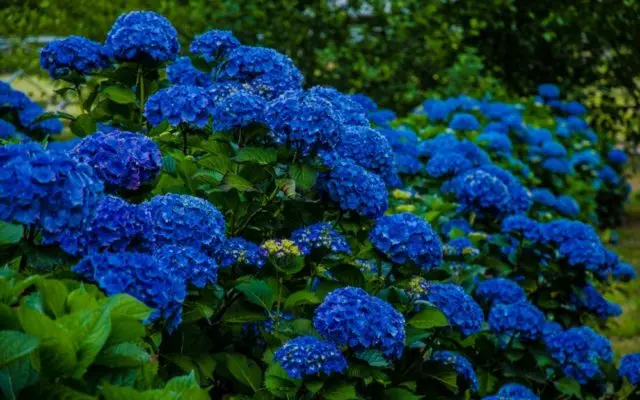
By adjusting the acidity of the soil, you can get blue and blue colors of varying intensity.
How to paint a hydrangea blue
Hydrangea flowers have been found to turn blue when soil pH is between 4 and 5,5. The closer this indicator is to the minimum value, the more saturated the color will be. In order for the hydrangea to bloom in blue, an acidity of the order of 5-5,5 is enough. You can control this indicator using special indicator strips available for sale in gardening stores. You can also measure the level of acidity with a special electronic device.
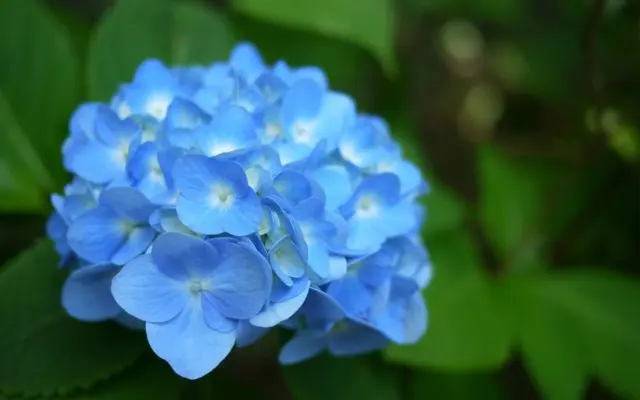
Blue hydrangea inflorescences look very attractive
Useful Tips
To independently “paint” the hydrangea in blue or blue, you can use some tips from experienced flower growers:
- A constant level of soil acidity can be maintained with citric acid. Once every 1-1,5 weeks, the root zone of hydrangeas is moistened with a special solution, for the preparation of which 2 tbsp is dissolved in 1 bucket of water. l. dry citric acid. Oxalic acid can also be used, while the proportions remain the same.
- You can increase the aluminum content in the soil by adding compost, pine litter or ground coffee.
- In specialized stores, you can purchase a special tool for self-coloring hydrangeas in blue or blue. Its main component is aluminum sulfate. The substance is introduced in dissolved form, it is very convenient to use. It is he who is used by flower growers on large plantations of hydrangeas to color them blue.

Special agent for coloring hydrangeas – aluminum sulfate
- Do not use water from wells or from the water supply for watering hydrangeas. The dissolved salts of calcium and magnesium contained in it will quickly lead to alkalization of the soil. It is better to use settled rainwater for irrigation, after adding a little lemon juice to it.
- It is possible to increase the digestibility of aluminum, as well as to prevent the development of fungal diseases, with the help of potassium permanganate – potassium permanganate. When using this substance, it is very important to observe the dosage, the solution should be pink.Important! Exceeding the concentration is fraught with burns for the plant.
- To acidify the soil, you can use the usual 9% table vinegar. For tillage, 100 ml of this substance is diluted in 10 liters of water. Processing begins in the spring, with the beginning of the hydrangea vegetation, and is completed in the fall, after the end of flowering.

Vinegar acidifies the soil well
- You can maintain acidity by mulching the hydrangea root zone with fresh sawdust, high-moor peat or bark of coniferous trees.
- When working with acids, even at low concentrations, care must be taken and personal protective equipment must be used.
A short video on how to independently adjust the color of hydrangeas:
Conclusion
In order for the hydrangea to be blue or blue, it is necessary to choose a variety suitable for coloring and provide the necessary soil acidity parameters and aluminum content for it. This is relatively easy to do, given the availability of the drugs needed for this. And by quantitatively regulating their introduction, it is possible to grow hydrangeas of the required brightness and saturation, from pale blue to dark blue.










